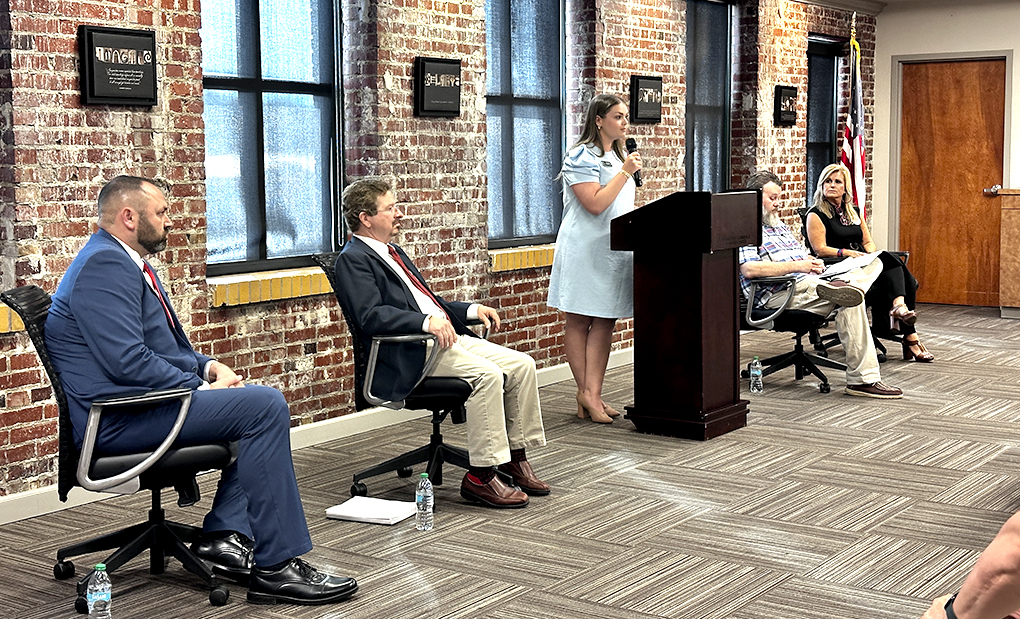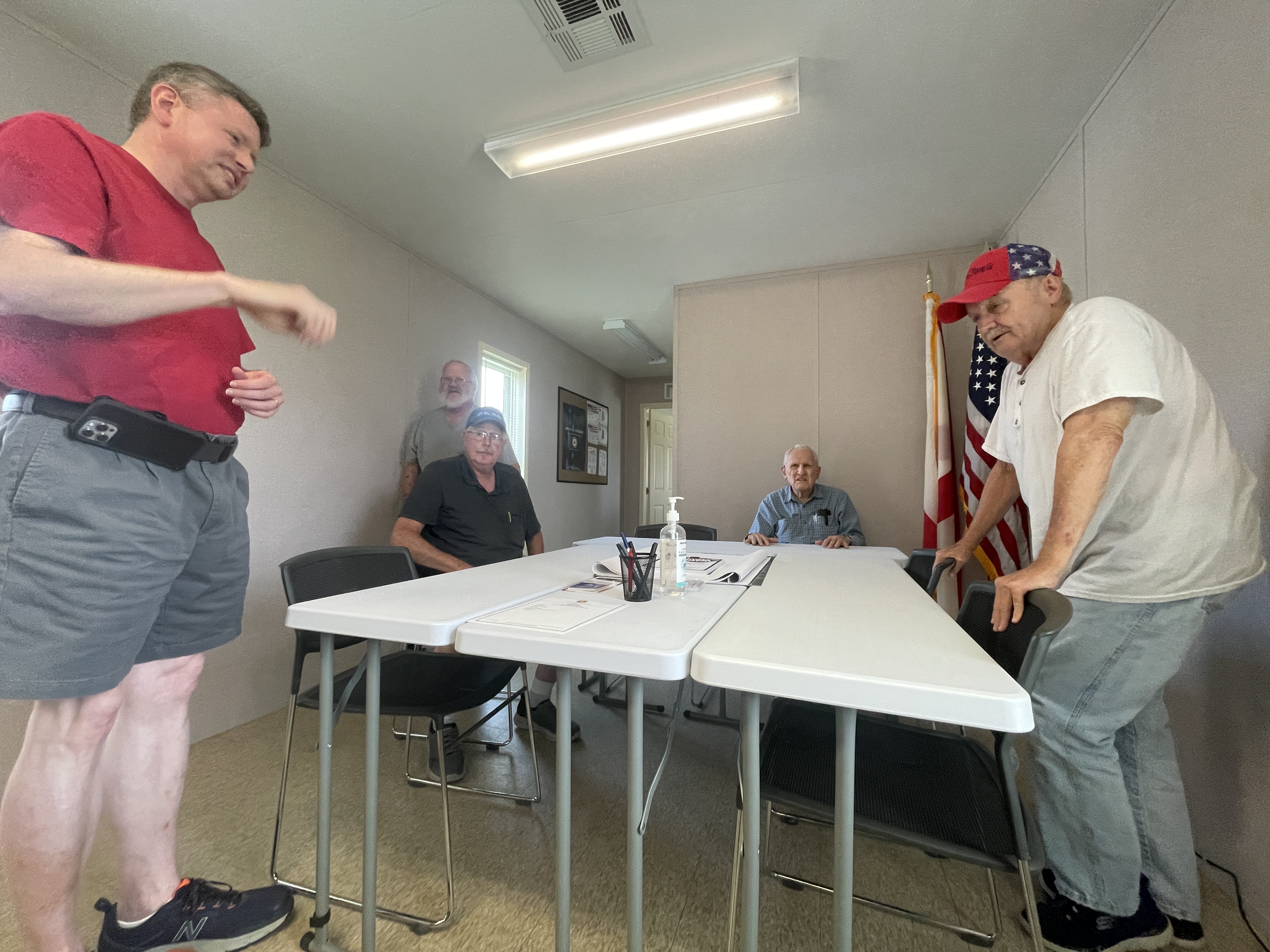Robert Carter: In case you forgot, it’s Derby time
Published 11:06 am Monday, May 4, 2009
A few weeks ago, I had the pleasure of touring the U.S. State and Rocket Center in Huntsville. During my tour, I perused a display of historic newspaper front pages from the days surrounding the first walk on the moon in 1969. Among those was a front page from The Orange County Register — that’s “The OC” to you teens out there, and Anaheim, California to the rest of us.
Below the two-inch-tall banner headlines about the Apollo 11 mission, down at the bottom of the front page, was something that startled me.
The headline read, “Early Results from Holly.” “Holly” was the storied Hollywood Park horse racing track, and under that was the results and payoffs from the first two races for that day’s program.
On the front page. Not the front of the sports section, but the front page of the entire newspaper.
That’s when it hit me as to how far that horse racing has fallen out of the public eye over 40 years’ time.
It may have escaped your notice, what with all the swine fl—er, sorry, “H1N1” panic (must be politically correct, can’t offend any pigs out there), but today is the 135th running of the Kentucky Derby.
In years past, this would be a day for sports fans on par with the World Series, the Super Bowl, or the Indianapolis 500. This was when horse racing was still considered a major sport, when newspapers still ran the full results and entries of their local track in the “agate” (small print) section and often employed their own handicappers to pick the next day’s winners.
For the few remaining hardcore fans of the Sport of Kings, those days must seem as far away as Ben Hur’s chariot races. The only newspapers that run results are in racing bastions like Louisville or New York. And results on the front page of the paper? Suggest that to an editor today and he or she would look at you as if you just landed on Earth from Planet Elvis.
Let’s take a look at why horse racing has largely become irrelevant in America.
Legal gambling is everywhere now. In racing’s heyday, the local track was the only place around where solid citizens could place a wager of any kind without breaking the law. Lotteries were unheard of, and casinos were relegated to Nevada and later Atlantic City. Want to win a few bucks with out risking time in the pokey? Post time is 1:30, be sure to get there early to bet the Daily Double.
Indeed, that concept led to the building of the Birmingham Race Course, the last major thoroughbred racing facility to be built in the United States. The idea was that thousands of gambling-starved patrons would flock from Georgia and points east, eager to play the only game around.
Now it’s hard to find a place that doesn’t have some sort of legalized gambling. Georgia, like numerous other states, has its lottery. Casinos have sprouted up on seemingly every length of river and every Native American reservation. Gamblers drive right by BRC on their way to Tunica or Biloxi. The track long ago gave up on horses and turned to the cheaper thrills of dog racing.
Ironically, slot machines have been the savior of thoroughbreds in many states. So-called “racinos” have cropped up in West Virginia, New York, Louisiana and elsewhere, with proceeds from the one-armed bandits going to supplement race purses. In fact, racing is West Virginia has never been better or richer thanks to racinos. Milton McGregor has done the same with his Victoryland dog track near Montgomery, tried to do it at BRC once, and wants to do it there again if “The Gubmint” will let him.
There’s not been a superstar since Secretariat or Seattle Slew. The Triple Crown is often called the toughest accomplishment in all of sports. No horse has won it since Affirmed in 1978. Eleven horses have won the first two legs but failed at the Belmont Stakes, with Big Brown being the latest last year.
Superstars drive any sport. Look at how the NBA lost interest from causal fans when Michael Jordan finally retired, and how interest has picked back up a bit with Kobe Bryant and Lebron James. Same with hockey after Wayne Gretzky hung up his skates. And, conversely, how NASCAR interest rose with the success of Dale Earnhardt.
The closest thing that the race game has had to a superstar recently was Barbaro in 2007, but for the wrong reasons — his fight to recover from an injury in the Preakness that eventually led to his demise.
There is vastly more competition for fans’ interest today. Much of it can’t be considered major, but get enough sports events together and they jockey (pun intended) for the limited attention of the public. Soccer and lacrosse have exploded among youth sports, and our televisions are saturated with all manner of cable sports channels. And that’s without even considering the impact of the Internet.
Plus, the major sports are much more visible. Where once Major League Baseball was only seen each Saturday on NBC’s Game of the Week, it’s now on some channel every night. Same with basketball, and to a lesser extent hockey and college football.
The irony of the explosion of sports media outlets is that horseplayers have never had it better when it comes to handicapping. In the not-to-distant past, bettors had nothing more to go on than the venerable Daily Racing Form and shady tips from guys with nicknames like Indian Charlie. But the past performances of horses are now provided in excruciating detail in all manner of web sites and publications, and three different cable channels that show nothing but horse racing and event take bets by phone.
That’s terrific for the dedicated horse fan, but it means little to the average Joe. Most people could care less about the sport outside of Derby Day. Even then, it’s more social than sporting event for most of the country.
There are still holdout areas. A large portion of Kentucky’s economy still depends on the Thoroughbred industry, and likewise for Maryland, home of the Preakness. And the Derby itself is still a huge event for Louisville. Race Day brings about as many fans to stately Churchill Downs as NASCAR does to Talladega, but the Derby is preceded by a huge two-week festival that includes a parade, a steamboat race on the Ohio River, a hot-air balloon race, a marathon, and a gargantuan aircraft and fireworks show on the Ohio. And there are the celebrity-drenched parties before and after the race — celebutante Paris Hilton and NFL quarterback Tom Brady are among the big names this year.
In fact, the race itself ranks fourth in attendance for all Derby Festival events. The air and fireworks show dwarfs them all, attracting nearly three quarters of a million spectators. “Thunder Over Louisville” one of the best-attended single-day events in the world.
It’s hard to say what it will take to make horse racing relevant again. While slot machines at tracks may help fix the bottom line, it won’t help increase the mind share among the public. Many slot players at racinos don’t even realize when there’s a race going on outside. The sport’s governing body has tried many promotions such as the year-end Breeders’ Cup weekend, but the networks dropped coverage of it and relegated it to ESPN. A new superstar winning the Triple Crown would help, but those are few and far between.
So since I won’t be covering any softball playoffs thanks to the swine flu threat, I’ll be sitting back today to watch the Derby, as any good native of Kentucky should. And since you won’t be attending any playoff games either, maybe you should join me. You can skip the mint julep — I don’t drink, but I’m told by those who do that it just messes up perfectly good bourbon — and try to pick a winner. I haven’t made my picks yet, but a horse named Dunkirk looks promising.
Now, if I could just get some help from Indian Charlie.
Robert Carter is the sports editor of The North Jefferson News.





